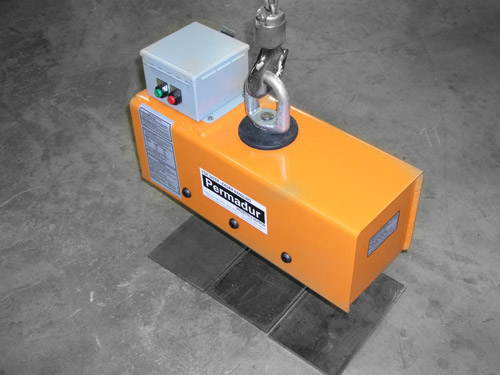Permanent lifting magnets are an essential tool in modern manufacturing and construction industries. They offer a fast, easy, and safe way of handling heavy steel items, reducing manual labor and increasing efficiency. However, like any tool, permanent lifting magnets have safety concerns that must be considered before use.
This comprehensive guide will cover all aspects of using permanent lifting magnets safely. From the basics of how they work to the necessary safety measures, we will provide you with all the information you need to ensure that your lifting operations are carried out safely and efficiently.
What are Permanent Lifting Magnets?
Permanent lifting magnets are magnetic devices designed to lift and transport heavy steel items. They use powerful permanent magnets to create a magnetic field that can attract ferrous materials, such as steel and iron. Permanent lifting magnets come in various shapes and sizes, from small handheld devices to large industrial units, making them suitable for a wide range of applications.
How do Permanent Lifting Magnets Work?
Permanent lifting magnets use strong permanent magnets to create a magnetic field. The magnetic field attracts ferrous materials, such as steel and iron, and holds them securely in place. When the lifting magnet is turned off, the magnetic field collapses, and the item can be released.
Safety Considerations
Before using a permanent lifting magnet, it is important to consider the following safety measures:
- Load Capacity: The load capacity of a lifting magnet is the maximum weight it can safely lift. Overloading a lifting magnet can cause it to fail, potentially causing injury to workers or damage to the load. It is essential to check the load capacity of a lifting magnet before use and never exceed it.
- Load Stability: Lifting magnets must be used with stable loads that are evenly balanced. An unstable load can cause the lifting magnet to tip over, potentially causing injury or damage.
- Load Condition: Lifting magnets must be used with clean, dry, and unpainted steel items. If the load is rusty, painted, or covered in oil, it can reduce the strength of the magnetic field and increase the risk of the load falling.
- Proper Training: All workers who operate lifting magnets must be properly trained and familiar with their operation. Workers should be trained in safe lifting techniques, proper load handling, and emergency procedures.
- Maintenance: Lifting magnets must be regularly maintained to ensure their continued safe operation. This includes checking for cracks, corrosion, or other damage and ensuring that the power supply is in good condition.
- Personal Protective Equipment: Workers who operate lifting magnets must wear appropriate personal protective equipment, such as gloves, safety glasses, and hard hats, to protect against injury in case of an accident.
- Inspection: Lifting magnets should be thoroughly inspected before each use to ensure that they are in good working order. If a lifting magnet is damaged, it should only be used once it has been repaired or replaced.


